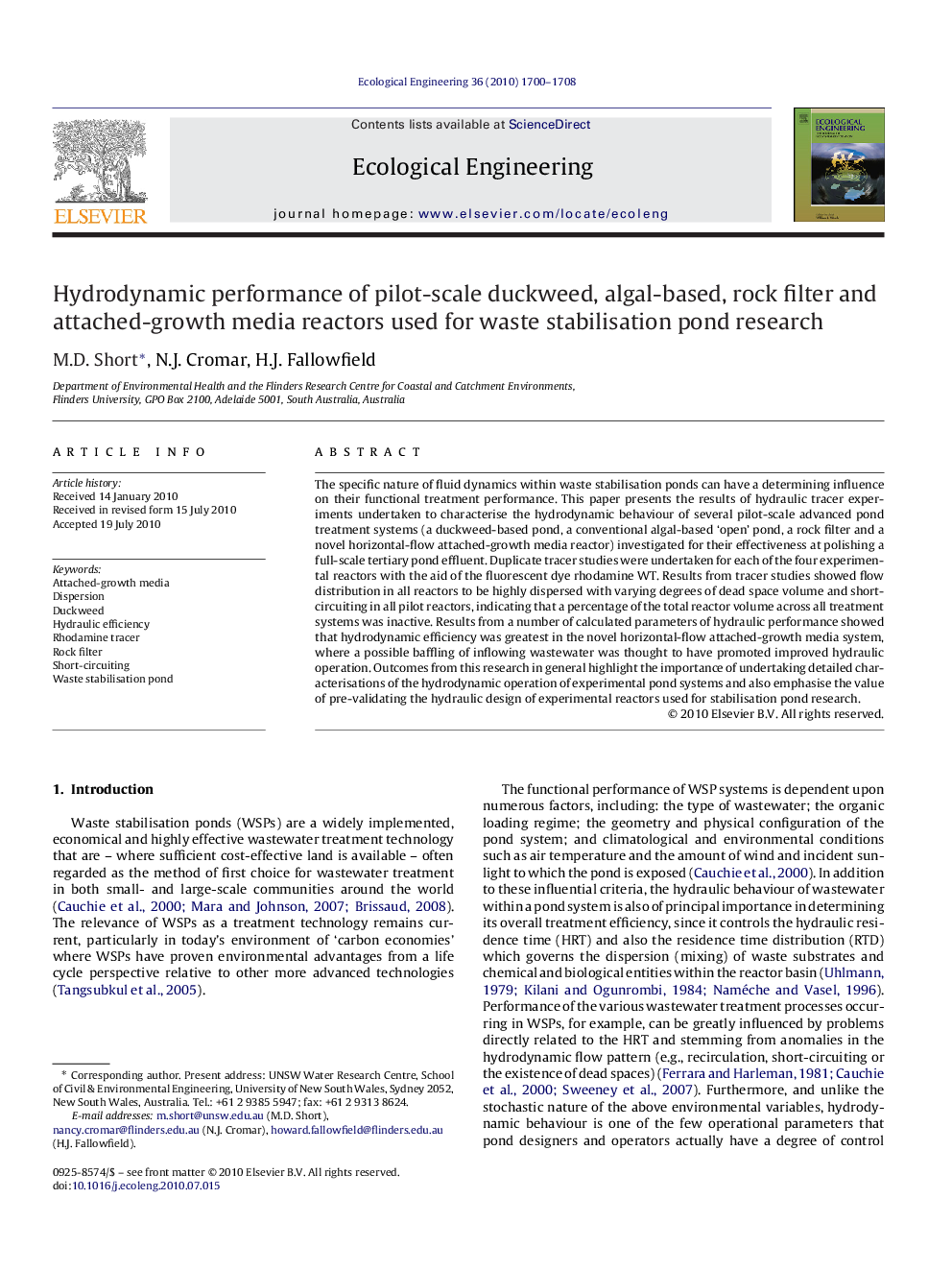| Article ID | Journal | Published Year | Pages | File Type |
|---|---|---|---|---|
| 4390482 | Ecological Engineering | 2010 | 9 Pages |
The specific nature of fluid dynamics within waste stabilisation ponds can have a determining influence on their functional treatment performance. This paper presents the results of hydraulic tracer experiments undertaken to characterise the hydrodynamic behaviour of several pilot-scale advanced pond treatment systems (a duckweed-based pond, a conventional algal-based ‘open’ pond, a rock filter and a novel horizontal-flow attached-growth media reactor) investigated for their effectiveness at polishing a full-scale tertiary pond effluent. Duplicate tracer studies were undertaken for each of the four experimental reactors with the aid of the fluorescent dye rhodamine WT. Results from tracer studies showed flow distribution in all reactors to be highly dispersed with varying degrees of dead space volume and short-circuiting in all pilot reactors, indicating that a percentage of the total reactor volume across all treatment systems was inactive. Results from a number of calculated parameters of hydraulic performance showed that hydrodynamic efficiency was greatest in the novel horizontal-flow attached-growth media system, where a possible baffling of inflowing wastewater was thought to have promoted improved hydraulic operation. Outcomes from this research in general highlight the importance of undertaking detailed characterisations of the hydrodynamic operation of experimental pond systems and also emphasise the value of pre-validating the hydraulic design of experimental reactors used for stabilisation pond research.
